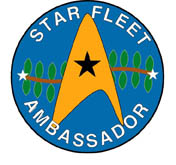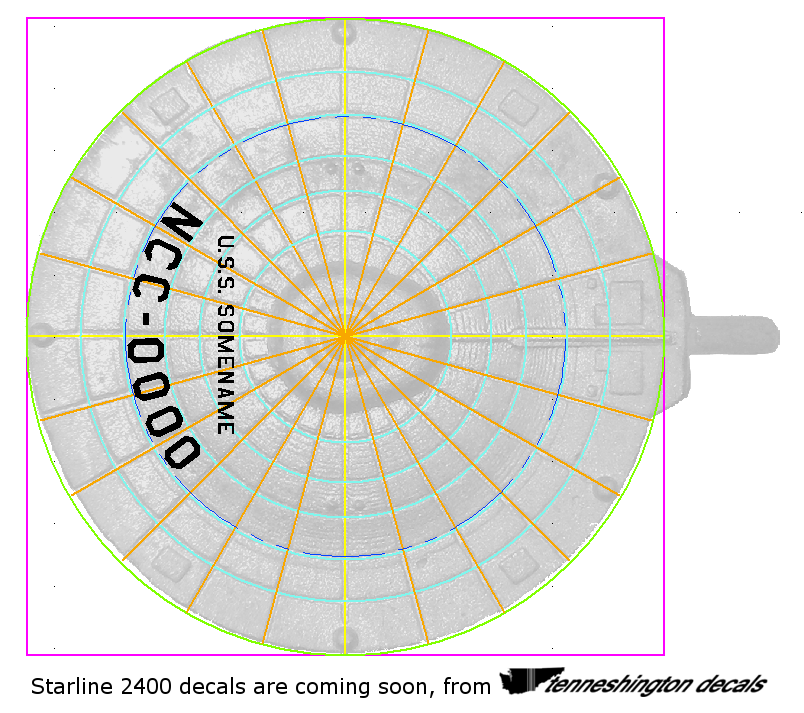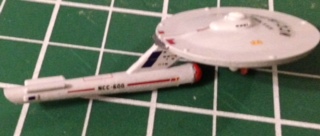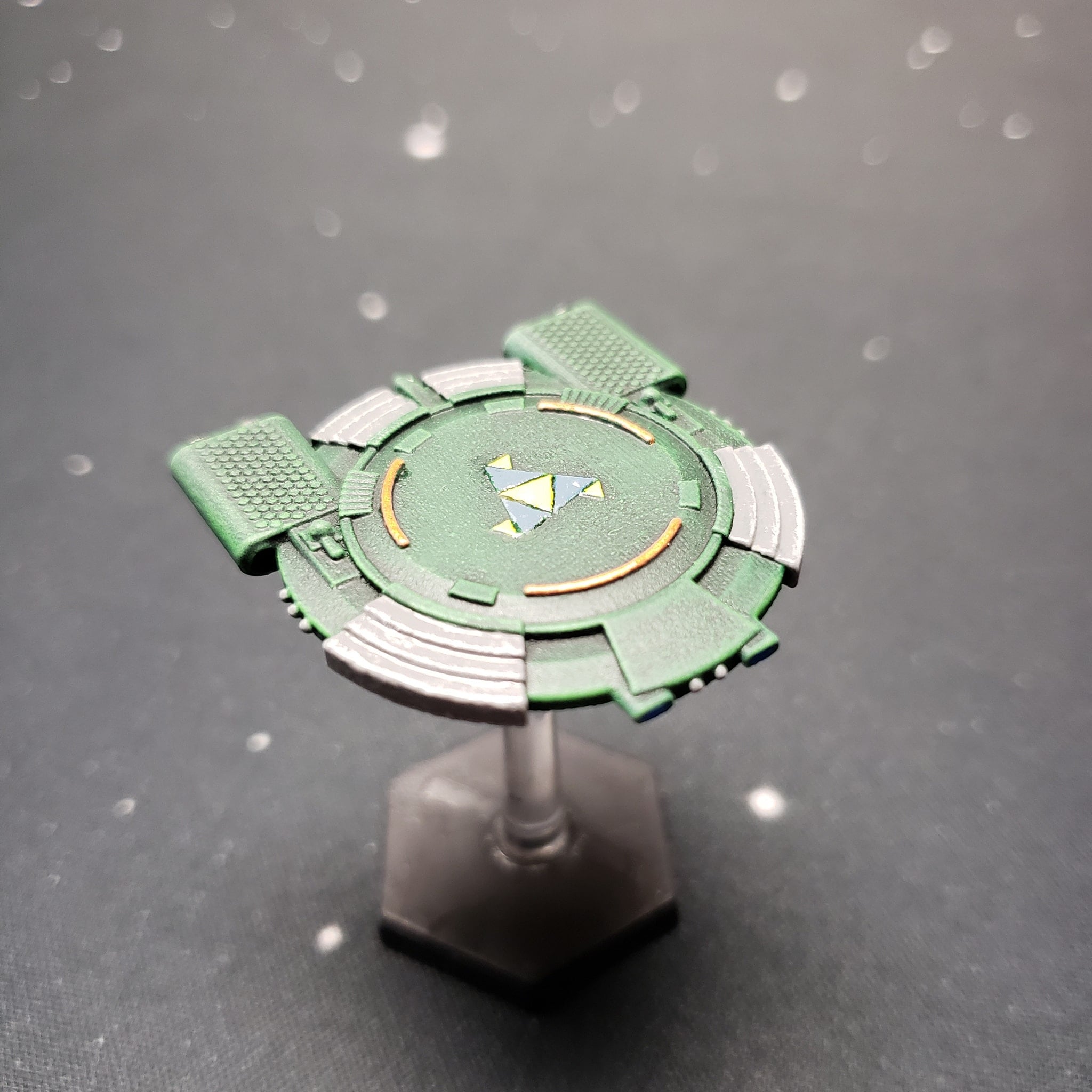
|
||||||||||||||||||||||||||||||||||||||||||||||||||||||||||||||||||||||||||||
November 2020
|
||||||||||||||||||||||||||||||||||||||||||||||||||||||||||||||||||||||||||||
Star Fleet Universe News THE BIG NEWS:
Distant Armada Unity is now in print and unifies the previous Nova and Admiralty editions, so there will no longer be Starmada fans who cannot game together. The new rules preserve the best of both previous systems and add dynamic seeking weapons rules that do what seeking weapons are supposed to do: force the enemy to move out of key areas or shoot his way through a swam of them. If you bought a PDF of either the Admiralty edition or Nova edition of Distant Armada through Warehouse 23, DriveThru RPG, or Wargame Vault, then your PDF library now contains the original older Nova or Admiralty edition you bought AND the new Unity edition we're giving you. Anyone who bought a hardcopy of Distant Armada Nova or Distant Armada Admiralty can get a free PDF copy by contacting us at marketing@starfleetgames.com. If you want to replace your hardcopy Nova/Admiralty book with a hardcopy Unity book, we'll sell you one for our cost ($8, less than half price) plus shipping. Hardcopies of Nova/Admiralty books will no longer be available but you will be able to buy hard copies of the new Unity books from ADB, Inc.
Star Fleet Marines: Counter-Punch has empire-specific counters for the Lyran Democratic Republic (LDR), Vudar, Paravians, Seltorians, Carnivons, and Jindarians. Each empire gets 140 counters for a total of 840 counters. These will be the first of these empires' counters for this game system. On close inspection, you will find that while the types of counters are the same for each empire, the art for the counters is empire-specific. These traditional-style counters are designed to be easily distinguishable on the modern-style maps that Star Fleet Marines contains.
We released two books as PDFs as "early" releases. They will be released in paper format later. These are the Tholian Master Starship Book and Battleships Armada Unity. If you bought a PDF of either the Admiralty edition or Nova edition of Battleships Armada through Warehouse 23, DriveThru RPG, or Wargame Vault, then your PDF library now contains the original older Nova or Admiralty edition you bought AND the new Unity edition we're giving you.
And then there are the older materials that have been released as PDFs. Captain's Log #30 has been newly released on DriveThru RPG and Wargame Vault; it was already available on Warehouse 23. Both Nexus #17 and Nexus #18 have been released on Warehouse 23, DriveThru RPG, and Wargame Vault. This completes the series for that title. Finally, Star Fleet Battles Commander's Edition, Supplement #2 has been released on Warehouse 23, DriveThru RPG, and Wargame Vault. The buyer is reminded that the first-generation X-ships were heavily revised for the Captain's Edition of Star Fleet Battles. The second-generation X-ships presented in Supplement #2 do not combine well with the ships in the later edition of SFB.
ADB Releases Ships for November 2020 On November 2, 2020, ADB released a total of 40 new items to its shop on Shapeways with over 2,300 items available in total. Notably this month we released many 7000 scale sets for the Omega empires. Please note that all ships are available in both 3788 and 3125 scales, except when noted. Check all these out here: https://www.shapeways.com/shops/amarillo-design-bureau-inc
WEBSITE:
Our website, www.StarFleetGames.com, continues to grow and improve. You are welcome to send us your requests, comments, and suggestions. Samantha Todd, our graphics director, continues to update the website, do covers for the new products, shut down pirate websites, help out around the company, and learn more about the game business.
TWITTER: VIDEOS: Star Fleet Marines Part 1 DOING VIDEOS OF THE SFU
A customer asked about posting "tutorial videos" for our games. We like it when people do that (and even give commendation medals) but you need to have us check the videos to make sure you aren't violating something somehow (or that you didn't make a rules error). Doing such videos to make money is not cool. Please drop us an email before you post the videos.
STARBLOG: STAR FLEET'S LEGIONS EXPAND: This month we feature Battle Group Hampton Roads, headquartered in Hampton, Virginia. CO William Phillips reports they play Star Fleet Battles and Federation & Empire. They also enjoy attending gaming conventions. Read more here: http://www.starfleetgames.com/battlegroup/battlegroup_HamptonRoads.shtml
Do you have a battle group? Be sure to report your activities here: http://www.starfleetgames.com/battlegroup/report.shtml
Do you want to see if there's a battle group near you? Check out the map here: http://www.starfleetgames.com/battlegroup/gather.shtml#US
Facebook Fan Pages
So join us on Facebook and get a fix of your favorite game there, too! JAGDPANTHER
Custom Decals for Starline ships Tenneshington Decals continues to provide custom decals for all currently produced Federation Starline 2500 miniatures. For more information or to download the order sheet, check them out at www.tenneshington.com. Or if you prefer, email Will McCammon at: will@tenneshington.com or Tony L. Thomas at: scoutdad@tenneshington.com.
Jupiter IV Decals is a source of decals for the 2400 line and will do custom decals as well as all official SFB names. In the near future Jupiter IV will move into the 2500 line and will work to get every listed name on the Starfleet registry completed in both scales.
Their website is: JupiterIvdecals.com
ONLINE TOURNAMENTS Sapphire Star: The Sapphire Star 6 Tournament was a classic match-up of Andy Koch's WYN auxiliary battlecruiser against Seth Shimansky's Federation ship in the final. In a hard-fought battle, Andy Koch came out the victor. Congratulations! Steven Petrick was the judge for this tournament. With four different winners of the various six different Sapphire Star tournaments, we will be able to run a Sapphire Crown tournament.
DEMOS AND CONS WITH SFU GAMES Due to the COVID-19 virus, many conventions have been cancelled. We encourage you to check out Star Fleet Battles Online where there is a free demo version. It is a good way to hang out with others who play Star Fleet Battles and Federation Commander. Check it out here: https://www.sfbonline.com/index.jsp
Star Fleet Battles games are held weekly in Tempe Arizona each Friday at Game Depot from 2:00 -7:00 pm. Eric Phillips is the person to contact. Star Fleet Battles games are held regularly in Indianapolis, Indiana at Family Time Games. Anthony Harding is the contact person. For more information see: http://www.meetup.com/Star-Fleet-Battles-Indy/.
Star Fleet Battles games are played regularly in Columbus, Ohio, on Sunday afternoons at the Soldiery. Lee Hanna is the contact person. Games are held in Spokane, Washington on an irregular basis. Contact them to see if there's a game scheduled. They meet at The Gamer's Haven, 2114 N. Pines St., Suites 1 & 2, Spokane Valley, WA 99206, (509) 443-5992 http://www.thegamershaven.net/ Download Transmissions HAILING FREQUENCIES: This is our newsletter and will let you know all the news for all our games. You can subscribe here. Have you missed an earlier newsletter? Click here to get caught up! COMMUNIQUE: This monthly magazine repeated much of the same information that Hailing Frequencies does. December 2019 was the last month it was published. Old issues can be downloaded from the Commander's Circle.
FC Forum Recent Posts
The Federation Commander site and Forum continue to grow as more gamers continue to find them. All of our games currently have topics in the Forum. If you have any comments, questions, or requests for our Graphics Director, this is the place to let her know. Come see what the commotion is about and join the Federation Commander Forum now.
Mini of the Month Daniel Bostwick painted this Andromedan Conquistador (3788 Scale, Fine Detail Plastic).
|
||||||||||||||||||||||||||||||||||||||||||||||||||||||||||||||||||||||||||||
|
New Releases EXTRAS FOR THE MONTH: ACTA Federation Guided-Weapons Destroyer You can look at Hailing Frequencies Extras here. Click here to see our previous issues of Hailing Frequencies.
Recently Released Distant Armada Unity, SKU 6134, $16.95 To be released in 2020
FC Federation Epack #5
GURPS Klingons Revision
Star Fleet Universe Index SFB Module R13
The rest of the Starmada Unity Edition
A new F&E module to be named later
ACTASF Book 3
SHAPEWAYS:
We’re now offering some of our miniatures and some new designs on Shapeways. You can check out the store here: https://www.shapeways.com/shops/amarillo-design-bureau-inc?sort=newest
PDF and EBOOK SALES:
RECENTLY RELEASED ON Warehouse 23 Ask Admiral Vanaxilth ELECTRONIC WARFARE
Francois Lemay asks: On Turn #1, a ship has three ECM and two ECCM, and does not use reserve power to change electronic warfare levels. On Turn #2, it starts with zero ECM and six ECCM. On Impulse #5, it changes four ECCM to four ECM, using four batteries. Is this legal or does (D6.312) prevent this?
William Wilson replies: Short answer: On Impulse #5 you could switch two circuits to ECM, but the others must wait until Impulse #8. Long answer: 1. Circuits can only reverse polarity once every eight impulses, even over a turn break. 2. Rule (D6.312) always applies, but it restricts only the actual output of the channel, not the power applied to it. If you apply the "wrong" power for the circuit, it stops working but will start working again once its cycle time is satisfied. If last turn you used battery power on Impulse #30 to switch ECM to ECCM, you can allocate for ECM during Energy Allocation, but you cannot actually use it until Impulse #6. You still have to announce what mode you allocated it in at the start of the turn (D6.32), even if it does not do anything yet. 3. The same thing applies to batteries, which can also use rule (H7.132) (a better choice in most cases). 4. Not powering a circuit does not count as switching the polarity. For example, suppose a given circuit was used for ECM on Turn #1. On Turn #2 it is not powered in Energy Allocation. Impulse #4, it could be powered as ECM using reserve power. On Impulse #8, another point of reserve power could be applied to switch it to ECCM.
5. Each circuit is distinct and is switched independently. So, in the example you gave, during all of Turn #1, circuits #1-#3 are in ECM mode, circuits #4-#5 are in ECCM mode, and circuit #6 is off. On Impulse #1 of Turn #2, all circuits are in ECCM mode. Circuits #4-#5 are free to switch (they have been in ECCM mode since forever), but circuits #1-#3 and #6 cannot switch again until Impulse #8 of Turn #2. On Impulse #5 of Turn #2 you apply four points of battery power for ECM. Circuits #4-#5 switch, and two of the others (it does not matter which, let's say #3 and #6) are pending. On Impulse #8 of Turn #2 circuits #3 and #6 can switch to ECM. At this point, circuits #1-#2 are ECCM and free to switch, circuits #4-#5 are ECM and locked until Impulse #13 of Turn #2, and circuits #3 and #6 are ECM and locked until Impulse #16 of Turn #2. Pete DiMitri asks: I am watching a game of Star Fleet Battles, and one of the players is saying that he can allocate energy to electronic warfare and then not use it until later in the turn, in effect creating an ECM or ECCM pool for later use. Note that this is not a scout ship or a carrier that has an electronic warfare pool. It is a standard warship. I have never understood it to work this way. I did not think you could allocate energy to ECM and simply not declare or use it until later in the turn (unless it were an electronic warfare pool for a scout or carrier). So, are they correct that electronic warfare can be used this way? ANSWER: No, power allocated to electronic warfare must be announced during the Sensor Lock-On Phase (D6.32) at the beginning of the turn. To change electronic warfare levels during the turn would require the use of reserve power. Francois Lemay asks: A plasma torpedo, after accounting for phaser damage and distance traveled, hits its target and scores 15 points of damage. Due to the ECM shift, the Proximity of Detonation roll (D6.361) results in 50% damage. Is the damage applied rounded down to seven or rounded up to eight? ANSWER: By (A3.5), damage is rounded up to eight. Follow-up question: Let's say two plasma torpedoes (both at strength 15) hit the same target on the same impulse. ANSWER: The damage for each torpedo is calculated separately. If both are reduced to 50% by the (D6.361) roll, the total damage would be 16 points. Marc Elwinger asks: In a fleet action, it seems that a plasma empire can have one ship generate six ECCM, then the commander can transfer control of plasma torpedoes just before impact to that ship (assuming the range is less than 35 hexes). So that the plasma torpedoes would have nine points of ECCM (six from the ship and three built-in) canceling almost any ECM. After impact, they can just transfer control of more plasma torpedoes to that ship. This would negate all the ECM from a scout, fighters, fast patrol ships, scout fast patrol ship, electronic warfare fighter, extra electronic warfare pods, and a carrier's electronic warfare support, for an entire fleet. I am looking at fighting an Inter-Stellar Concordium carrier group and they will be able to launch 72 plasma torpedoes (12 on fighters, 56 on plasma-D torpedo racks and four on the carrier) on the first turn. Am I reading this right about the ECCM? Kommodore Ketrick replies: Legal tactic, however note that plasma-D torpedo racks can only launch one (1) torpedo per turn in "offensive" mode, that is launched at a unit larger than size class 5. And if used in offensive mode in a given turn, it cannot be used in defensive mode. So the 14 plasma-D racks in the Inter-Stellar Concordium carrier group can only launch, on Turn #1, 14 plasma-Ds, not 56, if they are operated in offensive mode. Note that when the tactic was first espoused in the late 1980s I believe, it was noted that the one ship selected to provide guidance (while generating maximum ECCM) could also be supported by a scout lending it additional ECCM. It was originally pointed out in a discussion of plasma tactics in Captain's Log #13, page 47, top of the right-hand column. It is an old tactic by this time. Admiral Vanaxilth adds: Note that most plasma-armed ships can only control a number of seeking weapons equal to their sensor rating, so the plasma player would need to carefully arrange the timing and maneuver of the plasma torpedoes to maximize the number of torpedoes that can benefit from the ship with the maxed-out ECCM.
Gregory Flusche adds: I like to use either a scout or the largest ship present to guide the torpedoes with maximum ECCM, leaving the War Eagles or the gun line to use what little electronic warfare points they have for ECM. A. David Merrit adds: Just keep in mind that scouts cannot self-loan ECCM, only ECM. Glenn D. Faini asks: I do not understand this step in the Sequence of Play. 4. SENSOR LOCK-ON PHASE All players secretly assign alternative ECM/ECCM strength. Is not that done in the Energy Allocation Phase when we assign power to the ECM and ECCM lines of the Energy Allocation Form? What exactly do we do in this step? And, what is meant by "alternative"? Kommodore Ketrick replies: Some units have built-in electronic warfare capabilities or can receive limited amounts of electronic warfare from some sources. An example is a gunboat/interceptor/small or medium ground base. These have two points of built-in ECCM and two points of built-in "swing points" which must be designated as either ECCM or ECM during the Sensor Lock-On Phase [see (K1.721)]. (End of Admiral Vanaxilth) F&E Q&A
A TUG ON YOUR HEARTSTRINGS Q: Does the Hydran MTG upgrade a MB to a BATS in the same way as the regular production tug or does it take two of them to perform the base upgrade? In simpler terms, is the MTG an LTT or a tug?
A: It is a tug. It's nearly as big as a cruiser-based tug. Q: I found a reference in an expansion to tug missions AA and AB, but no reference to them in the 2010 rulebook. A: They were redesignated J3 and J4, respectively. When we update the expansions, that will get fixed. Q: Did the ability of theater transports (TTs) change in F&E 2010 in so far as how they carry PDUs? Rule (539.72) of Strategic Operations states that a single theater transport can carry and deploy one PDU. A: Changes were made! In F&E 2010 many previous rules were consolidated, updated, and even changed. Under (509.1-K1) groups of three theater transports can deliver a PDU (509.22). A re-study of the engineering showed that no single theater transport could manage the delivery and installation of a PDU. Q: If a colony is being established in a captured province, does the tug performing the mission count (430.22) as the province garrison? A: If the tug is performing any mission other than A, B, G, L, M, N, P, Q, R, or S, it cannot be counted as either a planetary or a provincial garrison. Q: Is there no limit on Klingon CVT production other than the number of TGA hulls and the EPs you can spend? A: None, although TGAs are limited to one per year and have many other uses. F&E is a game of choices and using all of your TGAs for this role means none available to do anything else. Q: Does the VHP overload Kzinti, Klingon, and Lyran LTTs under (517.41) because it uses the same rule (517.36)? Or is this not a weight issue? Rule (530.225) seems to indicate single weight but this implication of (517.36) (last sentence) and (517.41) (last sentence) seem to conflict with that concept. A: Looking at the SSDs for the VHP vs. the VAP shows that it is mostly cargo boxes and of the number that is similar to the VP pod instead of the VAP pod. The reference in (517.36) is for the ability of an LTT to carry the single VHP, not the weight restrictions of the VAP on a LTT in (517.41). Q: What if the Lyran tug borrows a Klingon VAP (or VHP) pod under rule (517.13), would rule (517.36) apply? Also, what if a Klingon tug borrows the Lyran KVP or KVH pods, does (517.36) still apply? A: Yes, in both situations. Q: It seems that the Lyran VHP cannot be mixed with other pods. Is this true? A: The VHP is, based on (517.36), a pod that cannot be mixed with other pods. Q: Can the Lyran VHP pod (530.23) be mounted with a borrowed Klingon VHP pod becoming Mission R+R and this would not overload the tug? A: Yes, the ability for the Klingons and Lyrans to share pods allows for this. Clever of them, wasn't it? Q: Does rule (517.36), specifically the part "The VHP pods in Advanced Operations use the same rule," apply to all VHP pods or just to the Klingon, Kzinti, and Lyran pods? A: It applies only to Klingon, Kzinti, and Lyran pods. Q: This rule gives the Lyrans a max limit of one VHP. The online OOB charts (711.3) gives a max limit of two Lyran VHPs. The online SITs (last updated two years ago) show a limit of one. Which is correct? A: This rule is correct, only one VHP for the Lyrans. ASK AUNT JEAN Dear Aunt Jean, what news do you have for us?
A: We released the space tarantula in four scales so that you can use it in your games. Remember that for GURPS the starships do CDam, while regular weapons do Dam. Therefore it will take 100 times the damage if your adventurers were to encounter an adult space tarantula with no ship in view. However, since people are small compared to ships, the adventurers can quietly leave if they want to.
Send questions to Jean at marketing@StarFleetGames.com and she will answer as soon as she can. Cool Stuff on the Website In this section we will provide links to various web pages and items that we think you will find "cool". We have also uploaded new Xander wallpapers to our Wallpapers section on the website: Wallpapers STAR FLEET ALERTS These are the press releases we send to the wholesalers, retailers, and media. You can get on the mailing list for them by asking Marketing@StarFleetGames.com to add you to the list. (Obviously, they are free.) They are uploaded to the Star Fleet Alert page FC Tactic of the MonthGENTLEMEN PIRATES: CHOOSE YOUR WEAPONS The most effective weapons fit out for the Orion Raider is a phaser-1 in the WPN box and phaser-1s replacing the drone racks. With this fit out, the Orion Raider can fire all of its phaser-1s and purchase 30 movement points without doubling its warp engines.
When fighting a cruiser, the Orion Raider should maneuver to attack a rear shield at a minimum of Range 5. At this range, the phasers produce 28 points of damage on average, enough to do internal damage to most light cruisers. Keep attacking through the down shield, targeting weapons, until most of the enemy's weapons are gone, then you can safely approach more closely to finish off the enemy ship. If you achieve attack position and the enemy uses a high energy turn to bring his heavy weapons to bear, abandon your attack run and use the phaser energy for movement and evasive maneuvers. The combination of evasive maneuvers and Orion stealth will produce a +3 shift; at Range 5 or greater this will make the Orion Raider almost immune to damage.
The tactical considerations of how to best divide fire between impulses when a group of direct-fire weapons has enough crunch power to penetrate a single shield and score internal damage has been widely examined. The Mizia doctrine of separating such "penetrating" fire into multiple volleys to maximize the number of weapons hits is well established.
Conversely, the question arises of what is the best manner to spread the fire of weapons over impulses, turns, and shield facings when the initial volleys would not be expected to penetrate the target's shield. Considered in the context of the tournament game, for example, this is a relevant question for disruptor-armed ships, but applies to other types as well. The conventional wisdom is that "non-penetrating" fire should be concentrated on a single target shield, impulse after impulse and turn after turn. This would be the most efficient method to score Mizia volleys and accumulate internal damage against an opponent. The question is, though, just how likely is such a strategy to succeed? Perhaps against a novice opponent this plan would have a high likelihood to yield a favorable facing against the damaged shield turn after turn. However, highly skilled rated ace opponents may be expected to expertly avoid fire against weakened shields, spreading the fire from shield to shield. Consider, for example, the Klingon or Kzinti tournament command cruisers. They must score at least 35 damage points to breach an opponent's battery-reinforced front shield. At Range 9-15, both of these ships are nearly equivalent sabre dancers, yielding 6-16 damage points per turn of fire at this range. Such long-range fire will not be expected to penetrate a fresh shield. An initial oblique overloaded shot with these ships at Range 8 scores more damage, but penetration of a front shield is by no means guaranteed. The Klingon with its UIM, 48% of the time, will hit with four overloaded disruptors. Combined with five phaser-1s and two phaser-2s, the Klingon may score 37 points on average, which is a threat to score only a few points of internal damage. However, the Kzinti is almost no threat to score internal damage, as he will hit with four overloaded disruptors only 20% of the time, and even then, likely score only 32 points of damage against a shield combined with phasers. On the initial Turn #1 approach, both the Klingon and the Kzinti may (and will usually) only achieve a shot in the Ranges 6-15, as many opponents will try to avoid a definitive exchange at Range 4 or less. Putting aside case of the Klingon who might score a few points of internal damage with a Range 6-8 overloaded shot, lets first examine the situation of the Kzinti who is almost certainly guaranteed not to score internal damage with his Turn #1 shot. For the sake of argument, the Kzinti might reasonably score 12 points of damage with combined phasers and disruptors at Range 9-15 and 26 points of damage at Range 6-8. Should the Kzinti fire all of his Turn #1 weapons at a single shield or try to divide it amongst several in his initial volley? An answer may be found by considering the combined effect of the follow-on disruptor volleys in Turns #2, #3 and so on with the likelihood that the new damage can added to the pre-existing shield damage to increase the amount of internal damage scored in these following turns. If we reasonably assume most skilled opponents will be able to avoid fire striking a previously damaged shield when only one such shield has been hit; firing all of the turn's weapons on a single shield will have little effect beyond a mild restriction in maneuver in Turn #2. It may take until Turn #3 or even Turn #4 before a follow-on disruptor strike falls upon a previously damaged shield when facing a skilled opponent. On the other hand, suppose the Kzinti successfully divides an overloaded Range 6-8 disruptor shot into two groups of 13 damage points; and thereby damages two front shields instead of only one. It will then be significantly more difficult for an opponent to protect two shields against a follow-on shot. A second Range 6-8 volley of 26 points of damage will cumulatively be the same as 39 points of damage scored, which now will yield internal damage. As a Turn #2 follow on shot may be much closer (less than Range 4), the Kzinti may wish to divide his Turn #1 fire onto the front three shields of the opponent. This will put nine points of damage on each shield and virtually guarantee nine more damage points compared to not spreading his fire at all. The comparison of dividing and not dividing among shields such non-penetrating priming fire is illustrated in the following tables. For heuristic purposes, the tables assume 27 damage points scored per turn. The strength of the front shields and the cumulative internal damage is shown per turn in the columns. Five batteries for reinforcement are spent to mitigate only the first volley of internal damage. Here is a baseline approach, concentrating non-penetrating fire on sequential shields. In the first table, fire is concentrated sequentially onto different shields (due to defensive maneuver) on the first and every turn:
In the second table, fire is divided evenly on the first turn, and concentrated on the weakest shield on each following turn:
By spreading the non-penetrating fire on Turn #1 over three shields, two volleys of seven total points of internal damage are scored on Turns #2 and #3 versus none scored in the baseline approach. This may yield a significant material advantage with two Mizia strikes up to two turns earlier! F&E Strategy of the Month Previous tactical notes have identified the value of using a Prime Team on mission (522.44); from a cost recovery standpoint and using average die rolls, allocating a five-EP prime team to this mission will pay for itself in eight to 10 turns, and will result in increased income in four to five turns (relative to the base survey ships).
Rule (542.0) provides two other options to the player: additional survey ships, and the heavy war destroyer survey module (HDWQ). Both options have an expense, so the question is, is the expense worth it? In every case, the increased income comes later in the warŠ when you are exhausted. All analyses are for a 34-turn General War, purchase the survey ships as new production and do not account for wounded or killed prime teams. The Lyrans have the choice first. They can expect to generate 332 additional EPs with their base survey (from 12 new provinces, five of them by Turn #10). Adding a prime team adds 46.5 EPs, so this is clearly profitable at marginal cost. Devoting one additional cruiser to survey duty on Turn #1 adds another 73.5 EPs (five provinces by Turn #7) and pays for itself and the prime team in 11 turns. For two (the second on Turn #2) add another 68 EPs (pays in 12 turns, five provinces by Turn #6). For three (built on Turn #4) add another 46.5 EPs (pays in 13 turns). HDWQ arrives too late, and never pays for itself, so do not bother. Is an extra 234.5 EPs worth three cruisers off the board from the first four turns (and a 53 EP expenditure)? The Klingons may also choose on Turn #1. They can expect to generate only 218 EPs (from nine new provinces, five by Turn #16). The Klingons must find new income in other ways. Adding a prime team adds 53 EPs. Devoting one additional cruiser on Turn #1 yields 88 EPs with breakeven on Turn #10 (five provinces by Turn #9). For two cruisers (the second on Turn #2), this adds 70 EPs, with breakeven on Turn #11 (the first five provinces by Turn #8). For three (built on Turn #4) +59.5 EPs, breakeven on Turn #12 (five provinces by Turn #7). HDWQ arrives too late and never pays for itself. Is an extra 270.5 EPs, or doubling your money, worth three D6s?
The Kzintis need every cruiser, I mean carrier, but may depend on off-map income. They can expect to generate 332 EPs from 12 new provinces (five by Turn #10). Adding a prime team adds 46.5 EPs, but we already knew that. Devoting one additional cruiser on Turn #1: +73.5 EPs, breakeven on Turn #11 (five provinces by Turn #7). For two (the second on Turn #2) +68 EPs, breakeven on Turn #12 (five provinces by Turn #6). For three (the third on Turn #4) +46.5 EPs, breakeven on Turn #13. The HDWQ arrives too late and never pays for itself. 234.5 EPs, off-map and safe, for just three cruisers. That's just 53 EPs to generate 181.5 profit and almost double your survey income! The Hydrans are even more dependent on off-map income. They can expect to generate 292 EPs from 12 new provinces (five by Turn #12). Adding a prime team adds 40.5 EPs, so do it. Devoting one additional cruiser on Turn #3 (do not wait for the PGR on Turn #12): +66.5 EPs, breakeven on Turn #13 (five provinces by Turn #9). A second on Turn #4, assuming you can get it off-map of course, yields 59.5 EPs, breakeven on Turn #13 (five provinces by Turn #8). A third may be difficult to build and get off-map on Turn #6, but you can gain 41.5 EPs and break even on Turn #14 (five provinces by Turn #8). The HDWQ arrives too late and does not pay for itself, however, the LNHQ can survey on Turn #14 and does pay for itself (+24 if it is the only ship added). The LNHQ could save the Hydrans that third survey cruiser (and -22.5 EPs), but they still breakeven by Turn #15. Maximum survey adds 207.5 EPs to a Hydran economy normally scraping the barrel for 50 EPs. This is a great deal, and Coalition players should make every effort to stop this from happening. The Federation is the master of exploration. They can expect to generate an astounding 580 EPs from 19 new provinces (five by Turn #11) with seven SRs. Adding a prime team gains 30.5 EPs and gets that fifth province by Turn #10, so this is a no-brainer. The Federation has many options. For example, what about the 3xCVL and COV? The Feds have already paid for their infrastructure, what if they send them right back out for survey? +196.5 EPs and fifth province by Turn #9, increased relative survey income on Turn #8! The HDWQ arrives too late and does not pay for itself (but could sub a CVL back on to the board). For 16 EP, the Feds could buy a COV on Turn #7: +44.5 EPs and breakeven by Turn #24. For another 16 EP COV on Turn #8 you get 37 EPs and breakeven on Turn #24. The third COV on Turn #10 yields 36 EPs and breakeven on Turn #24. Maximum effort the Federation generates +344.5 EPs from survey and +12 additional provinces, all for 53 EPs. They can sextuple their money! The Romulans can always use more income, but they have work to do on-map first. Once they get their empire sorted, they can send their three survey ships off-map and expect to generate 117 EPs from nine new provinces (five by Turn #23), income they will badly need since exhaustion strikes right when they start exploring off-map. The HDWQ still does not pay for itself, so ignore it. The prime team gambit is, as always, worthwhile for 20 EPs and brings the fifth province on Turn #21. Another SPS on Turn #11 should get out there at the right time (at a cost of 13 total EPs). This gains 31.5 EPs, breakeven on Turn #23, fifth province on Turn #20. The fifth SR, an SPS on Turn #12, yields 25.5 EPs, breakeven on Turn #25, fifth province on Turn #19. The sixth SR, another SPS on Turn #14 yields 24.5 EPs, breakeven on Turn #25, fifth province on Turn #18. Maximum surveying will generate 101.5 EPs from survey and six additional new provinces, all for 44 EPs. The Romulans have plenty of on-map space for colonies and on-map surveying, but the off-map area is completely safe (so long as the ISC are neutral). The Gorns do not want to find Paravians off-map, apparently. They can expect to generate all of 139 EPs from seven new provinces (five on Turn #26). The prime team does help for +33 EPs (and the fifth province on Turn #23). The HDWQ does not help and should be ignored. A third SR on Turn #12: +52 and breakeven on Turn #21 (fifth province on Turn #20). A fourth SR on Turn #14 means 41.5, with breakeven on Turn #22 (fifth province on Turn #19). The fifth SR on Turn #16 produces 30.5, with breakeven on Turn #24 (fifth province on Turn #18). Maximum surveying will generate +157 EPs from survey and seven additional new provinces, at a cost of 53 EPs. The Gorns can double their money, as well.
Over the course of the General War, rules (522.0) and (542.0) will allow every empire to at least double their moneyŠ if they can spare the cruisers. (End of F&E Strategy of the Month)
A Call To Arms: Star Fleet Tactic of the Month Are you tired of the enemy avoiding your heavy weapons arc, especially when you are flying a Gorn dreadnought, Romulan Condor, or Kzinti heavy battlecruiser or dreadnought? Make sure the enemy ship just happens to come into your firing arc instead of floundering around trying to get a more agile enemy into your sights. How can you accomplish this?
Have another ship tractor your target and drag it into your heavy weapons firing arc! This, however, takes some advanced planning and positioning. You have to think a turn ahead to put the ship you need where you're going to need it, without the enemy realizing what you're doing. Ideally you want a ship that is significantly larger than the ship to be dragged (e.g., a Federation heavy cruiser versus Klingon D7 or D5). During the dragging ship's activation, which should be after the target ship has moved, have it use the Engage Tractor Beam! special action. Next, end your ship's movement within 2" of the ship to be tractored. The following turn, the tractored ship may roll to break the tractor when it is activated. It does this by making an opposed Crew Quality Check against the ship tractoring it. [See the rules for this procedure]. If the tractored ship fails to break free, it is meat on the table. Drag it in front of the ship that intends to fire at it or drag it to a point that the designated killer ship can get it into arc. Remember that you can only move if you have more starting damage points than the enemy ship, and you can only move up to 6". As a final warning, be careful to not blow up the ship that was dragged, as the explosion can damage friendly ships - including the ship doing the tractoring. Also try to arrange your positioning so that the tractored ship cannot fire its heavy weapons at the ship that is tractoring it. ===== (End of A Call to Arms: Star Fleet Tactic of the Month)
|
||||||||||||||||||||||||||||||||||||||||||||||||||||||||||||||||||||||||||||
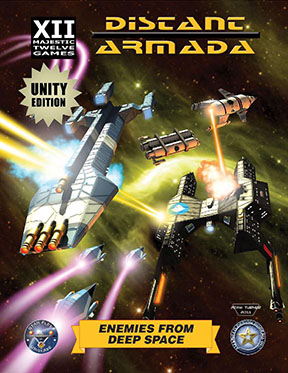

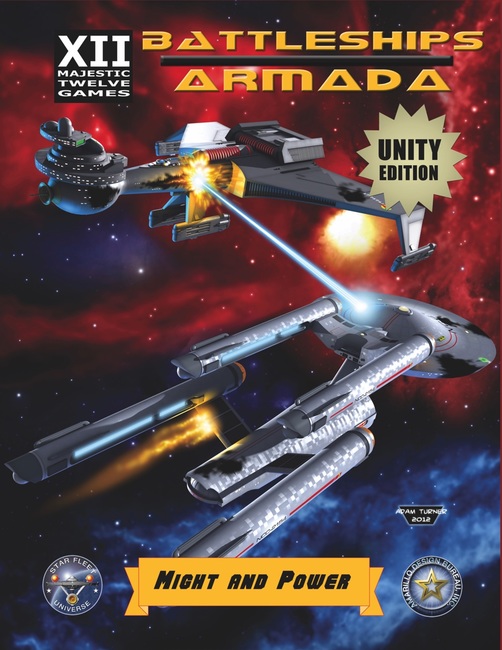
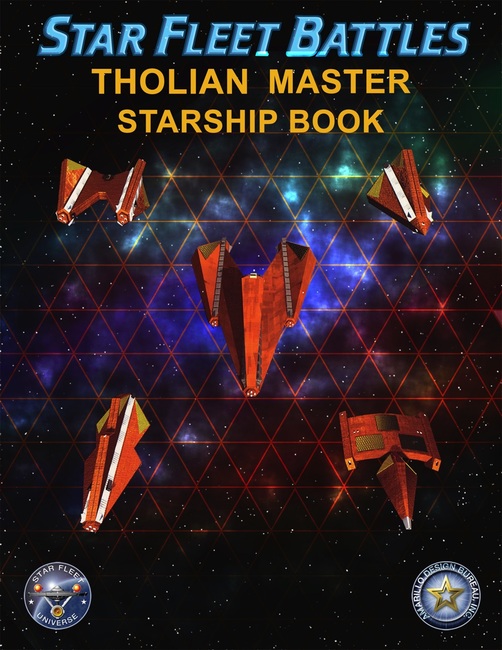
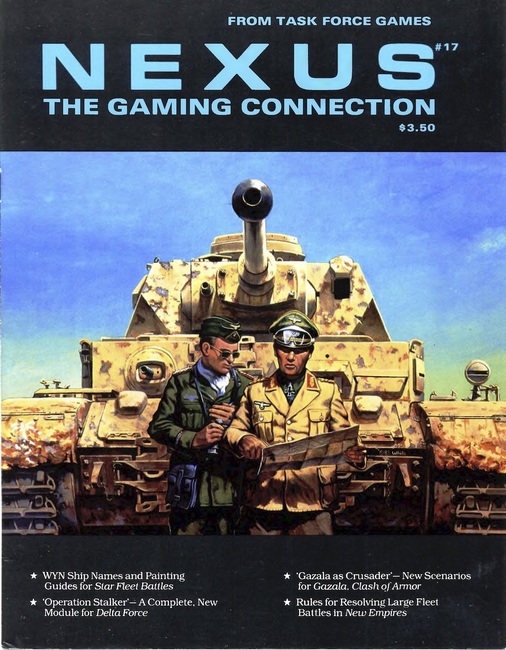
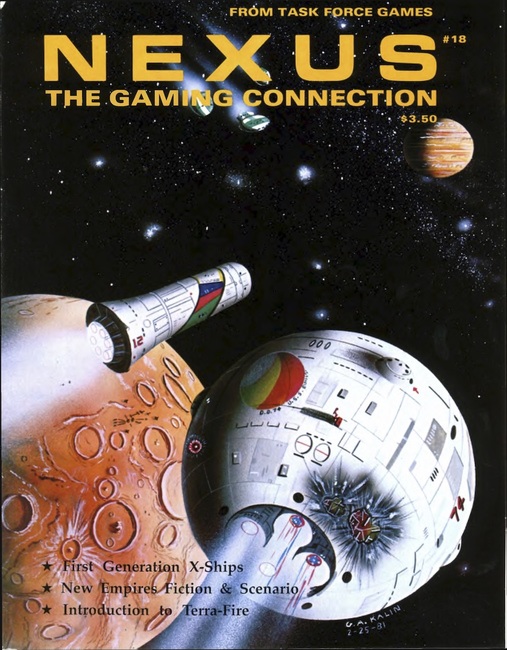

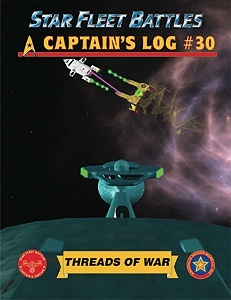
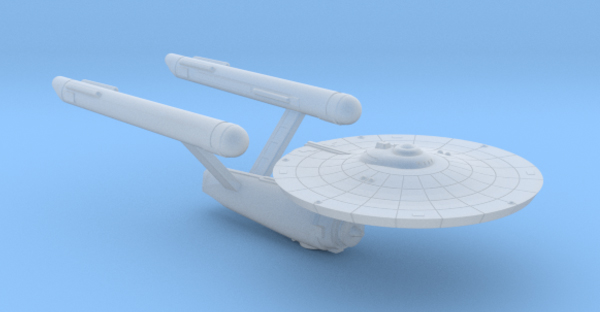
 show our games and to teach potential players some basics.
show our games and to teach potential players some basics. 